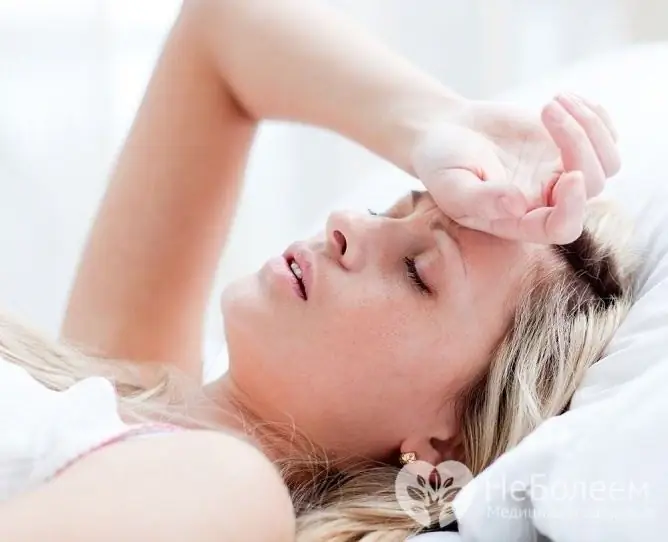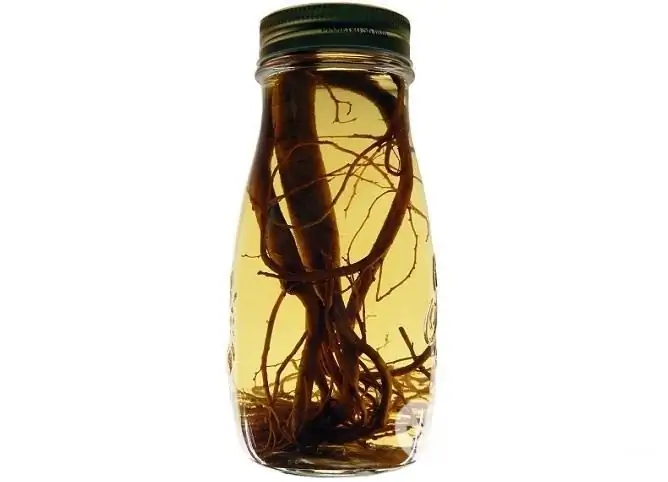- Author Rachel Wainwright [email protected].
- Public 2023-12-15 07:39.
- Last modified 2025-11-02 20:14.
How to increase the lower pressure without increasing the upper one: drugs, folk remedies
The content of the article:
- Causes of low diastolic blood pressure
-
What to do with low diastolic pressure
- Patient assessment
- Determine the reason
- How to increase diastolic pressure
- Video
The question of how to increase the lower pressure without increasing the upper one is often asked by patients to doctors. There is no unequivocal answer to it, since a variety of reasons can underlie the decrease in diastolic pressure.

Low blood pressure, although it is an unpleasant condition, is rarely associated with severe pathology
Blood pressure is the pressure that blood puts on the walls of the arteries. This important hemodynamic indicator includes three parameters:
- Systolic (upper, heart) pressure. At the time of systole (contraction), the heart pushes a certain portion of blood into the aorta, which at the moment of movement through the arterial vessels affects their walls. The strength of this effect is called systolic pressure.
- Diastolic (lower, renal) pressure. When moving, the blood experiences a certain resistance from the walls of the vessels. The more elastic the vessels, the less pronounced this resistance, the faster the myocardium relaxes and the lower the diastolic pressure. The biologically active substance renin synthesized by the kidneys has a great influence on the tone of the blood vessels. And therefore, the second value of blood pressure is sometimes called renal.
- Pulse pressure. It is the difference between upper and lower pressure, expressed in the same way as systolic and diastolic pressure - in millimeters of mercury (mmHg).
Causes of low diastolic blood pressure
Low blood pressure is called hypotension. Most often, there is a synchronous decrease in both systolic and diastolic pressure. But sometimes situations are observed when the upper pressure remains normal or even slightly increased, and the lower one decreases, for example, in a person, the pressure can be 120/50 mm Hg. Art. The following pathological processes can lead to the development of this condition:
- shock conditions;
- renal or heart failure;
- dysfunction of the heart valve apparatus or myocardial contractile activity;
- heart rhythm disturbances;
- severe allergic reactions;
- severe anemia;
- hyperthyroidism;
- peptic ulcer of the stomach and duodenum;
- severe hypovitaminosis;
- malignant neoplasms;
- volumetric blood loss;
- violations of water and electrolyte balance;
- long-term adherence to an excessively strict low-calorie diet or mono diet.
What to do with low diastolic pressure
If the patient has a low lower pressure, in this case it is necessary:
- assess his general condition;
- conduct an examination and identify the cause of this condition;
- to carry out treatment aimed at normalizing blood pressure levels.
Let's consider each of these points in more detail.
Patient assessment
A decrease in diastolic pressure may be accompanied by the appearance of certain symptoms or proceed without them.
If a person does not have any malaise and diastolic hypotension is detected only as a result of tonometry, treatment, as a rule, is not required, since doctors consider this condition as a variant of the physiological norm.
A significant difference between systolic and diastolic pressure (over 40-60 mm Hg) is often accompanied by the appearance of general weakness, headache, and dizziness. In this situation, you do not need to wonder how to quickly raise the lower pressure at home, but you need to urgently consult a doctor, since the reason can be very serious.
Determine the reason
In clinical practice, an isolated decrease in diastolic pressure is observed extremely rarely, in no more than 2-3% of cases, and in the remaining 97-98%, hypotension is due to a simultaneous decrease in both upper and lower pressure.
Long-term low diastolic pressure is one of the symptoms of such a formidable disease as aortic valve insufficiency. It requires long-term drug treatment, and with the progression and growth of heart failure, surgical intervention. In this situation, it is important to consult a cardiologist in a timely manner, and not to seek an answer to the question of how to raise diastolic pressure at home.
If during the examination no abnormalities in the structure of the valve apparatus of the heart and dysfunction of the contractile activity of the myocardium are detected, then the cause of diastolic hypotension is most likely hormonal imbalance or vegetative vascular dystonia. In these cases, patients usually have a low diastolic pressure combined with a low systolic pressure, or the latter is characterized by lability and rapidly changes from normal to low.
How to increase diastolic pressure
Systolic pressure is a more important hemodynamic indicator than diastolic (except for patients with aortic insufficiency). With its increase, vascular insufficiency is compensated, the development of which is evidenced by a decrease in the lower pressure. In this regard, one should not strive to increase diastolic pressure without increasing systolic pressure. This is basically impossible.
With aortic insufficiency, treatment of diastolic hypotension is carried out exclusively by a cardiologist, and if this condition is based on a violation of the hormonal status, then by an endocrinologist. With the vegetative-vascular genesis of low diastolic pressure, the patient is led by a neuropathologist or psychotherapist. In this case, psychotherapy sessions are shown, the appointment of neurotropic drugs.
With slightly pronounced hypotension, folk remedies can also be used - tinctures of Eleutherococcus or ginseng (or other tonic herbs), which can be prepared independently or purchased at a pharmacy. They should be taken 10-15 drops 2-3 times a day.

Ginseng tincture has a tonic effect
On the recommendation of a doctor, you can take pills that contain caffeine, for example, Citramon or Askofen. However, an elderly person should be given them with great care, since they can provoke a rapid and often significant increase in both diastolic and systolic pressure.
With a critical drop in pressure, the administration of glucocorticoid hormones (Prednisolone, Dexamethasone), vasoconstrictors (Mezaton, Adrenaline), analeptics (Caffeine, Cordiamine), colloidal and crystalloid solutions is indicated.
In many cases, it is possible to increase the lower pressure without resorting to medication. For this, doctors recommend:
- Drink coffee or strong tea in the morning. However, it should be borne in mind that these drinks contain caffeine, which increases not only diastolic, but also systolic pressure. Therefore, after using them, tonometry should be carried out after 30-40 minutes, and then repeat it several more times during the day. If it is established that coffee and / or strong tea increase the lower pressure, but also the upper pressure up to 140 mm Hg. Art. and above, then their use should be abandoned in the future.
- Eat a balanced, healthy diet. With hypotension, it is very important to eat at least 4-5 times a day at the same time. The diet should include foods rich in protein (meat, cottage cheese, fish), vitamins and trace elements (vegetables, fruits, nuts, herbs). Dishes should be digestible and high in calories. Such nutrition has a tonic effect on the human body in general and the cardiovascular system in particular.
- Do not restrict the use of liquids and table salt. These products help to increase the filling of blood vessels with fluid, due to which there is an increase in blood pressure.
- To live an active lifestyle. To activate cardiac activity and increase vascular tone, regular exercise therapy, walking, swimming and other sports allow.
It is impossible to predict how, during therapy, an increase in the lower pressure will occur (simultaneously with systolic or in isolation). Therefore, self-medication is unacceptable. Therapy should only be prescribed and monitored by a physician.
Video
We offer for viewing a video on the topic of the article.

Elena Minkina Doctor anesthesiologist-resuscitator About the author
Education: graduated from the Tashkent State Medical Institute, specializing in general medicine in 1991. Repeatedly passed refresher courses.
Work experience: anesthesiologist-resuscitator of the city maternity complex, resuscitator of the hemodialysis department.
Found a mistake in the text? Select it and press Ctrl + Enter.






